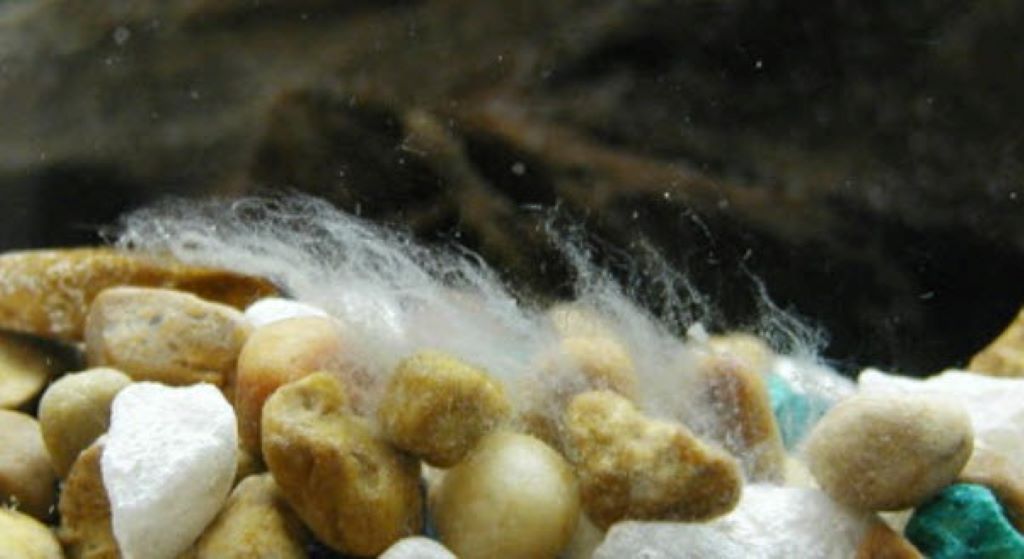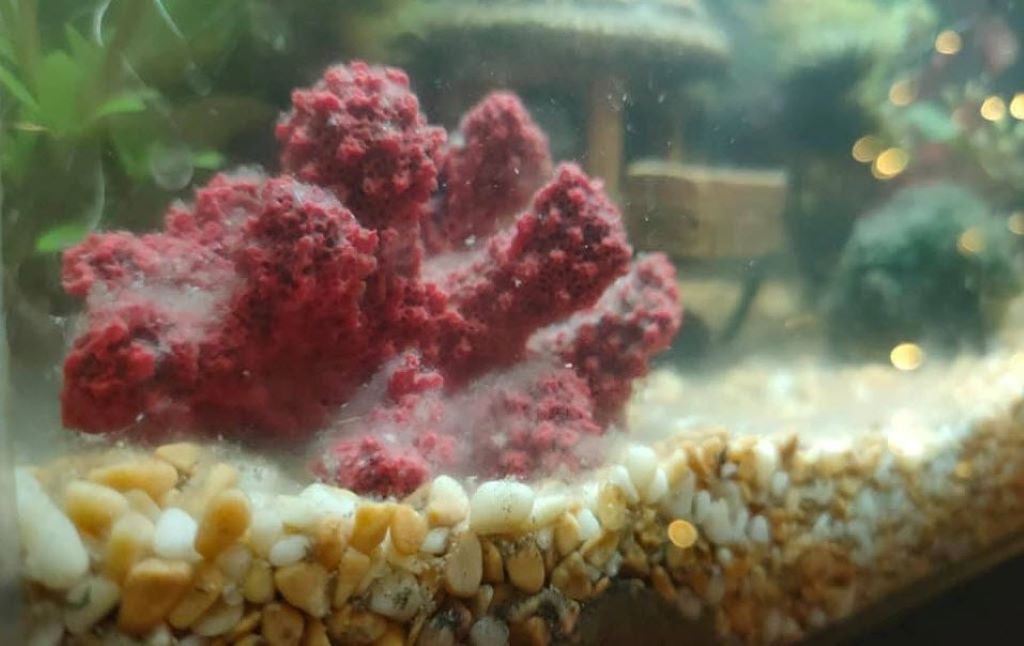
Discovering white, fluffy patches in your aquarium corners can be alarming for any fish keeper. This common problem affects both beginners and experienced aquarists alike. Understanding what causes this issue and how to address it effectively is crucial for maintaining a healthy aquatic environment. According to experts at Be Aquarium, proper tank maintenance and quick action can prevent this problem from escalating into a serious health threat for your fish.
Thank you for reading this post, don't forget to subscribe!White fuzz typically appears as cotton-like growths in tank corners, on decorations, or even on fish themselves. These fuzzy patches are usually fungal or bacterial colonies that thrive in certain water conditions. When you notice white cotton fuzz in fish tank corners, immediate identification and treatment become essential to protect your aquatic pets. The good news is that this issue is highly treatable when caught early and addressed with the right approach.
Understanding What White Fuzz Really Is
The white fuzzy substance you see in your aquarium corners is most commonly a fungal growth called Saprolegnia. This fungus naturally exists in most aquatic environments but only becomes visible when conditions favor its rapid growth. Additionally, some white fuzz may be bacterial colonies or a combination of both fungi and bacteria working together.
These organisms feed on organic matter in your tank. Dead plant material, uneaten food, and fish waste provide perfect nutrition for fungal and bacterial growth. When these materials accumulate in tank corners where water circulation is weakest, white fuzz begins to develop. Therefore, the appearance of this growth often signals an underlying water quality issue that needs attention.
Primary Causes of White Fuzz Formation
Several factors contribute to white fuzz development in aquarium corners. Poor water circulation ranks as the most common culprit. Tank corners naturally have less water movement, creating stagnant zones where debris settles and fungi thrive. However, this is just one piece of the puzzle.
Overfeeding your fish creates excess organic matter that sinks to the bottom. When food particles decay in corners, they become breeding grounds for fungal growth. Similarly, inadequate filtration fails to remove dissolved organic compounds from the water column. These compounds provide nutrients that fuel fungal colonies.
High ammonia or nitrite levels also stress your aquarium ecosystem. Stressed fish produce more waste and have weakened immune systems, making them susceptible to fungal infections. Furthermore, introducing new decorations, plants, or fish without proper quarantine can bring fungal spores into your established tank.
Temperature fluctuations weaken your tank’s biological balance. Most beneficial bacteria operate best within specific temperature ranges. When temperatures swing outside these ranges, harmful organisms can gain the upper hand. According to research from the National Institutes of Health, fungal growth accelerates in warmer water conditions combined with high organic loads.
Effective Solutions for Eliminating White Fuzz
Addressing white fuzz requires a multi-step approach. Start by performing a partial water change of approximately 25 to 30 percent. This immediately dilutes fungal spores and removes dissolved organic matter. Use a gravel vacuum to thoroughly clean tank corners where debris accumulates.
Next, examine your filtration system. Ensure your filter is appropriately sized for your tank volume and running efficiently. Clean or replace filter media if it appears clogged or deteriorated. Additionally, consider adding an air stone or additional water pump to improve circulation in stagnant corners.
Test your water parameters using a reliable test kit. Check ammonia, nitrite, nitrate, pH, and temperature levels. If any readings fall outside acceptable ranges, take corrective action immediately. Ammonia and nitrite should always read zero in established tanks, while nitrates should stay below 20 parts per million for most freshwater fish.
Remove any visible white fuzz manually using a clean toothbrush or algae scraper. Take out affected decorations and scrub them thoroughly under running water. For porous decorations like driftwood, you may need to soak them in a diluted bleach solution, then rinse extensively and let them dry completely before returning them to the tank.

Preventing Future White Fuzz Problems
Prevention is always easier than treatment when it comes to aquarium issues. Establish a consistent maintenance schedule that includes weekly water changes. Regular water changes remove accumulated organic waste before it can fuel fungal growth. Moreover, they replenish essential minerals and maintain stable water chemistry.
Feed your fish only what they can consume within two to three minutes. Excess food is the leading cause of water quality deterioration in home aquariums. If you notice uneaten food after feeding time, reduce portion sizes at the next feeding. Consider investing in an automatic feeder if you tend to overfeed.
Improve water circulation throughout your entire tank. Position your filter outlet to create a gentle current that reaches all corners. You can also add a small powerhead or wave maker to eliminate dead spots. However, be careful not to create currents too strong for your fish species.
Quarantine all new additions to your aquarium for at least two weeks. This includes fish, plants, and decorations. Quarantine tanks allow you to observe new arrivals for signs of disease or fungal growth before introducing them to your main display. This simple step prevents countless problems down the road.
Monitor your tank temperature daily and keep it stable. Sudden temperature changes stress fish and disrupt beneficial bacteria colonies. Use a reliable aquarium heater with a thermostat and consider a backup heater for valuable or sensitive fish collections.
When to Use Antifungal Medications
Sometimes manual removal and improved maintenance are not enough. Persistent white fuzz may require antifungal medication. These treatments are available at most pet stores and come in various forms including liquids, tablets, and powders.
Before adding any medication, remove activated carbon from your filter. Carbon absorbs medications and renders them ineffective. Follow dosage instructions carefully, as overdosing can harm your fish and beneficial bacteria. Additionally, increase aeration during treatment because many medications reduce oxygen levels in the water.
Common antifungal ingredients include malachite green, methylene blue, and potassium permanganate. These chemicals effectively kill fungal colonies but should be used as a last resort. Natural alternatives like aquarium salt can also help in mild cases, particularly for freshwater fish that tolerate salt well.
Continue treatment for the full prescribed duration even if the white fuzz disappears. Stopping treatment early allows surviving fungal spores to recolonize your tank. After completing treatment, perform a large water change and replace your carbon filter media to remove residual medication.
Special Considerations for Different Tank Types
Planted aquariums require extra care when treating white fuzz. Many antifungal medications harm live plants, especially delicate species. In heavily planted tanks, focus on manual removal and improved circulation rather than chemical treatments. Therefore, maintaining excellent water quality becomes even more critical in planted setups.
Saltwater aquariums face different challenges with white fuzz. Marine fungi and bacteria differ from freshwater varieties and may require specialized treatments. Protein skimmers are particularly effective at removing organic compounds before they can support fungal growth in reef tanks.
Goldfish and koi ponds also develop white fuzz, particularly in corners and around filters. The same principles apply, but the larger water volumes make treatment easier. Outdoor ponds benefit from natural UV light exposure, which helps control fungal and bacterial populations. However, excessive algae growth can create new problems, so balance is key.
Recognizing When White Fuzz Affects Your Fish
White fuzz on fish themselves is a serious concern requiring immediate attention. Fungal infections on fish usually start as small white patches that spread rapidly if untreated. Affected fish may scratch against decorations, clamp their fins, or become lethargic.
Separate infected fish into a quarantine tank immediately to prevent spread. Treat them with appropriate antifungal medications while addressing water quality issues in the main tank. Fish fungal infections often follow injuries or bacterial infections, so look for underlying causes beyond just the visible fuzz.
Conclusion
White fuzz in fish tank corners is a manageable problem when you understand its causes and solutions. This fungal growth results from poor water circulation, excess organic matter, and inadequate maintenance. By implementing regular water changes, improving filtration, reducing feeding amounts, and maintaining stable water parameters, you can eliminate existing white fuzz and prevent future outbreaks.
Quick action is essential when you first notice white fuzzy patches. Manual removal combined with water quality improvements resolves most cases without medication. However, persistent problems may require antifungal treatments. Remember that prevention through proper husbandry is always preferable to treatment. With consistent care and attention, you can maintain a crystal-clear, fuzz-free aquarium that provides a healthy home for your aquatic pets.
Frequently Asked Questions
Is white fuzz in my fish tank dangerous to my fish?
White fuzz itself is usually not immediately dangerous to healthy fish. However, it indicates poor water quality that can stress fish and make them susceptible to infections. If white fuzz appears directly on your fish, it becomes a serious health concern requiring immediate treatment.
Can I use household bleach to clean decorations with white fuzz?
Yes, you can use diluted household bleach to clean porous decorations. Mix one part bleach with nine parts water, soak items for 10 minutes, then rinse thoroughly under running water for several minutes. Let decorations air dry completely for 24 hours before returning them to your tank to ensure all bleach residue dissipates.
How often should I clean my fish tank to prevent white fuzz?
Perform partial water changes of 20 to 30 percent weekly for most aquariums. Clean your filter monthly and vacuum substrate during water changes to remove debris. This consistent maintenance schedule prevents organic buildup that fuels fungal growth.
Will white fuzz go away on its own without treatment?
White fuzz rarely disappears without intervention. While small amounts might diminish temporarily, the underlying conditions that caused it remain. Without addressing water quality and circulation issues, the fuzz will return and potentially worsen. Proactive treatment prevents escalation into a major problem.
Can white fuzz spread from one tank to another?
Yes, fungal spores can transfer between tanks through contaminated equipment, nets, or hands. Always clean and disinfect equipment after using it in an affected tank. Wash your hands thoroughly before working in different aquariums to prevent cross-contamination.
Related topics:
Feeding Clownfish in Aquariums: A Comprehensive Guide
Unique Large Aquarium Decorations: Creative Ideas to Transform Your Tank
